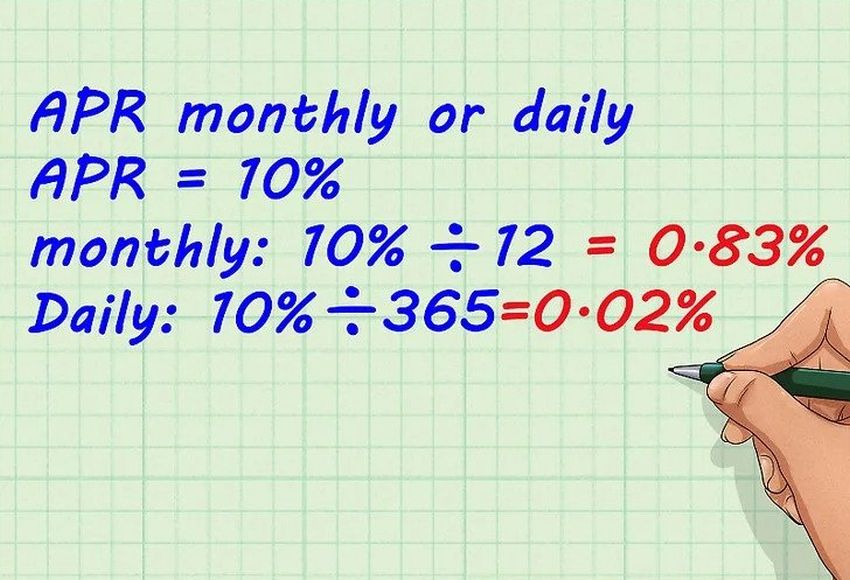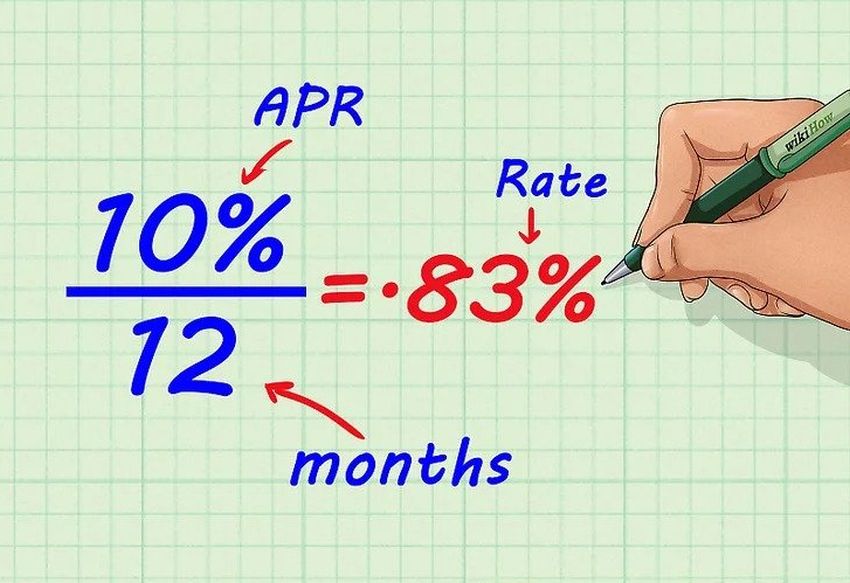The banking industry is full of complex calculations and assessments. Especially when it comes to the loan department, these calculations become excessively intricate and meticulous. APR, which works for the Annual percentage rate is a quantitative term that reflects the cost involved in borrowing loans.
It is generally relevant to mortgage loans and credit cards. APR is the percentage of a loan that is paid extra as the cost of the loan. The system of APR may sound simple but is undoubtedly complex concerning varied loan providers and their mechanisms. If you are applying for a loan, then a broker like Fresh Loan can assist you in understanding the comprehensive aspects of APR that relate to your specific loan policies and criteria.

source:uk.style.yahoo.com
The cost reflected by APR for borrowing a loan for a certain period includes various fees and transactional costs, although it does not indicate it entirely in the account. APR is a solution that helps you understand the overall cost involved with your loan, despite its classification under heads like interest rate structure, penalties, transaction fees, etc.
You can assess multiple loans available in the market by comparing the APRs and should select the lowest APR after consulting with a diligent broker. As such, it is of immense use to people who are planning to take a short or long term loan. Often the attractiveness of an investment can be guessed just by looking at its APR.
Page Contents
Why APR

source:uk.style.yahoo.com
Don’t let the technical terms of accounting language confuse you. When you land on a finance website, you see multiple rates and numbers that have different meanings. Some sites consist of diversified charts, and some stick to a single amount, however, a financial expert can help you assess the entire and distributed costs of your loan. Apart from determining the overall cost of the loan, APR is crucial as it
Acts As A Unique Tool: Unlike an interest rate, APR has unique qualities. Interest reflects the charges of keeping a sum to itself; however, APR considers annual cost that is all-inclusive. As stated earlier, APR can have different meanings, depending upon the loan type and the company’s usage. So it is essential to understand the precise functions of APR and calculate it as per specific needs.
APR Works For All: Assessing the cost of loans are quite tricky as the loan providers work with different mechanisms and policies. No matter how transparent your lenders are, it is always a question that what factors can be correlated to assess the cost of a loan from different lenders. In this case, APR acts as a correlating factor that is evaluated by a similar method for all investments. It is because it remains the same for all, and even though there might be some differentiation, you can take the assistance of expert loan brokers to assess the available options intelligently.
As APR consists of all the factors contributing to the cost of the loan, you can quickly assess what option is beneficial in terms of rates and fees.
Types of APR

source:uk.style.yahoo.com
APR can be of different types, and before assessing the loan, you need to know that what kind of APR is considered for your investment. The popular types of APR prevailed in the market are variable and fixed APRs.
Fixed APR: As the name suggests, a fixed APR remains constant throughout the loan period. This type of APR offers ease during budgeting as it remains constant.
Variable APR: These are prone to alter with changes in index rate interest, also favored as the prime rate. The movement of top-rate reflects a positive shift on the APR as when top rate increases, there is an equivalent rise in APR too.
Variable APR is prone to upward and downward movements, which can be favorable as well as unfavorable too. So you have a chance to leverage lower rates as well as higher rates relating to the rise in index rates.
Calculations

source:wikihow.com
The calculation of APR is quite simple, as it is expressed in the form of a percentage. It is calculated by dividing the sum of fees and interest with the principal amount. The quotient is then divided with days. The resulted term will be multiplied with a total number of days in a year and then also with 100.
It can be expressed as APR= (((Fees+Interest/Principal)/n)×365)×100.
This calculation helps you assert a single value that evaluates the total amount, including monthly installments, charges, upfront fees, etc. that are required to be paid in the course of the loan.
APR does not reflect the compound rate of interest of the year. It only multiplies the periodic rate of interest to the counts of periods.
Conclusion

source:wikihow.com
As you can see, an Annual Percentage Rate plays a vital role in determining the attractiveness of a loan to the lender as well as borrower. It is also used by the broker to offer credit as an attractive package to potential borrowers.
As such, the role of APR in the loan market is of prime importance, and the same must be clearly understood before borrowing a loan from the market. Any neglect of the APR may lead to a wrong deal that may cost too much in the long run.
These days, a massive amount of financial literacy is available online that can help you understand the whole subject of APR properly. So even if you are not looking to apply for a short or long term loan in the foreseeable future, it is always better to educate yourself about the APR.
That way, in the future, when the actual need arises, you will find yourself confident enough to choose the appropriate loan for your requirements by comparing the APRs. Having a thorough knowledge of APR will also enable you to negotiate with the lending agencies for a more favorable repayment condition for your loan.





